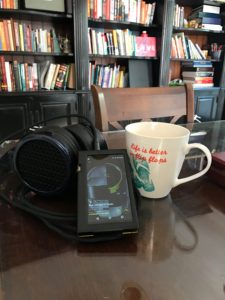
The market for digital audio players has gotten rather competitive lately, and rightly so. Some of the retail prices for these devices have frankly gotten out of control. While I suppose it’s true that an item is worth whatever someone will pay for it, I do think that the DAP is a great example of companies pushing the price envelope a bit too much. Astell&Kern is a great example of an extremely successful firm that has, by that success, created a paradigm shift by saying it’s ok to charge 1-3k for what amounts to an Android phone with a juiced amp/DAC. I’m not saying those devices aren’t great, merely pointing out that the profit margin may be a little too much for this humble servant to stomach. To that end, I began researching more affordable DAPs that met expectations in the features department.
Having been released at the beginning of the year, the Onkyo DP-X1 fits this bill perfectly. While the MSRP is higher, the device can be yours for $675 or less on Amazon. The list of features on this device belies its price; in fact, it may be more relevant to say what this device doesn’t do. It doesn’t act as a phone, but occupying that precious hardware space inside the case is some of the most sophisticated digital audio equipment you’re likely to find. In all other aspects, it functions just like your favorite Android device: email, web connectivity, open source downloadable apps from Google Play, calendar, contacts, Kindle, etc. Oh yeah, and it supports MQA. Boom. Name another device on the market that does all this for the price.
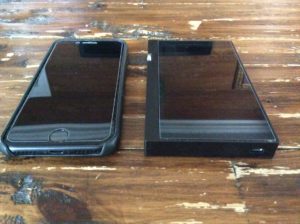
Let’s look at the details as it pertains to audio playback. The DP-X1 sports dual DACs and amps, and is therefore able to deliver a true balanced signal through its 2.5 mm output. The DAC chips are ESS Sabre ES9018K2Ms, and the amps are ESS Sabre 9601Ks. Onkyo has provided two options for balanced software playback, ACG (Active Control Ground) and BT. There’s some mumbo-jumbo on the Onkyo website about what exactly this means, but to dumb it down for clueless consumers like me, it apparently provides a more stable grounding for the output. Maybe my hearing isn’t what it used to be, but for me the settings were very close. Perhaps the former allowed a little broader soundstage. In addition to the 2.5mm bal output, there’s a standard 3.5mm unbalanced analog out for all your other headphone needs. The 2.5mm outputs at 150 mWx2 and the unbal at 150 mWx1. In terms of playback, the DP-X1 supports up ALAC, AIFF, FLAC, DSD up to 11.2, and the aforementioned MQA.
Onkyo’s software functionality is what you’d expect from a great Android device. This one runs 5.1.1, while not the newest OS still quite good in its features. As stated above, it has access to the Google Play store and all that entails, in addition to Android’s built-in melding with all things Google—Gmail, calendar, contacts, etc. Onkyo was very smart to use an essentially unaltered Android platform, because it offers a few apps that the lofty Atell&Kern devices still don’t, like Tidal. I suppose A&K’s concern with a fully open platform was people rooting and inadvertently bricking their device, which at that price point I get. But with a historically very respected firm like Onkyo, and at perhaps less than half the cost, one can get full access as well as access to any streaming platform your heart desires? That’s a no-brainer to me.
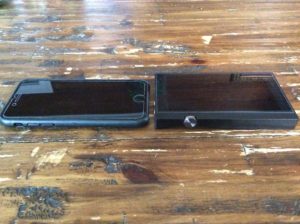
And wait, that’s not all. All you Roon fans out there, take notice. Downloading the Roon app onto the DP-X1 not only allows one to control the Roon Core from your handheld device, but also outputs through the device. So you can have access to your ENTIRE LIBRARY. I have 8000 lossless tracks on my NAS, and when I’m attached to the home wifi network, that means I can listen to whatever the hell I want, in fully glorious lossless playback. This is probably the coup de grace for me, and makes the Onkyo DAP part of my long-term stable.
Playback on the device can be achieved through several apps; I used both the pre-installed player as well as Onkyo’s other downloadable app, HF player (which I reviewed below and is currently in use on my iPhone as well.) Both these apps work pretty seamlessly, and unlike multiple apps on the iPhone, these share music and automatically see whatever you’ve dragged onto the DAP’s storage. They also share the pretty killer 16 band EQ function that allows up to 1000 different custom settings. Onkyo has paired with multiple musicians such as Scott Ian from Anthrax to provide preset EQ downloads, which work well for various types of music and provide for a little listener interaction with customization.
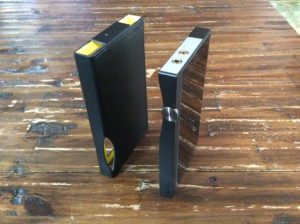
When using the device in unbalanced playback, Onkyo quotes a 16-hour battery life. I’ve personally found this to be a bit less, perhaps more like 10-12 hours. In balanced playback mode with the most hi-res DSD files, I can practically hear the battery meter drop like I was warming up the Death Star. I guess this is probably due more to the balanced headphone out than the files, but there you have it. When listening through balanced playback at home I’ve been plugging the device into its charger, and switching to a 3.5mm unbalanced cord when out and about.
When discussing file transfer onto the device, it helps to revisit some hardware specs. The device has 32GB of internal storage, with two micro SD card slots, supporting up to 200GB cards, for a total of 432GB. That’s a hell of a lot of storage, even for hi-res. I’ve found with various file formats and album sizes, it’s a good rule of thumb to assume each album will be about 1GB, so excluding OS and various apps, one should be able to get about 400 albums on the device. That’s more than enough that you’d have to recharge this sucker many times over before getting through the whole library, and that’s a good problem to have these days. Onkyo has also presumably one-upped A&K in this area as well by building obsolescence out of the device; with newer software upgrades I’m assuming one could put larger micro SD cards into the device. For now, I forked over the cost of 2 200GB cards so I could extend out to the maximum technology.
Let’s talk about the device’s sound for a bit. Overall, I was very pleased with this player’s clarity. I used it with four different monitors: Shure SE 535 IEMs, Beyer T70p mod, MrSpeakers Ether Flows, and Oppo PM-3s. The player has three different gain settings, all of which are pretty close. The device is extremely transparent, and I felt the soundstage was nice and wide, approaching my favorite hologram presentations. Using the open-back planar magnetic design and balanced output of the Ether Flows, the soundstage was fantastic, playing well to the design of the headphone. I felt bass was a little lacking with this setup, and was much improved with the closed-back planar magnetic Oppos. I’m sure the Ether Flow C would solve that, perhaps at the expense of such a wide soundstage. Either way, you will not be disappointed at the sound of this device. While the output power isn’t as high as some devices, I believe that certain manufacturers attempt to overcome shortcomings of their devices by upping the output and overpowering listeners. This device does not do that, and I feel that the soundstage really benefits in the detail retrieval and quickness departments.
The Onkyo DP-X1 is all you’d expect in a modern DAP in this price class. For me, there were several features that puts it head-and-shoulders above the competition: Dual balanced DACs and amps, MQA support, and an open platform that allows Tidal and Roon streaming. At a $675 price point, you’d be hard pressed to find a better DAP from a more reputable company. This device comes with my highest recommendation.
![]()
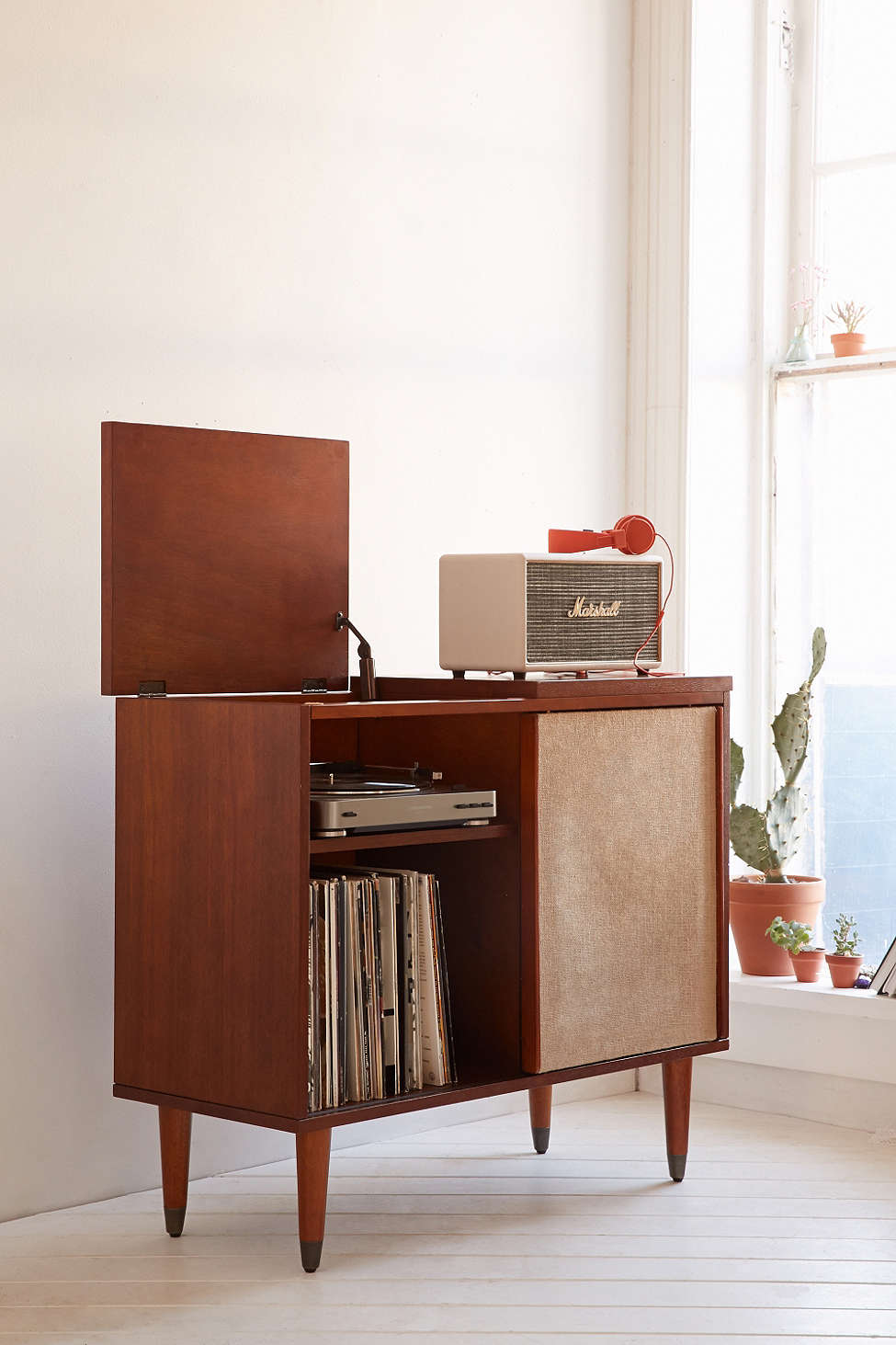
thyname
Thanks for the nice review.
Do you happen to know playback on balance mode utilizing the dual DACs is permitted / utilized via third party apps, such as Tidal app?
matthewpartrick
I don’t currently; but now that you mention it I’m going to find out. Thx.